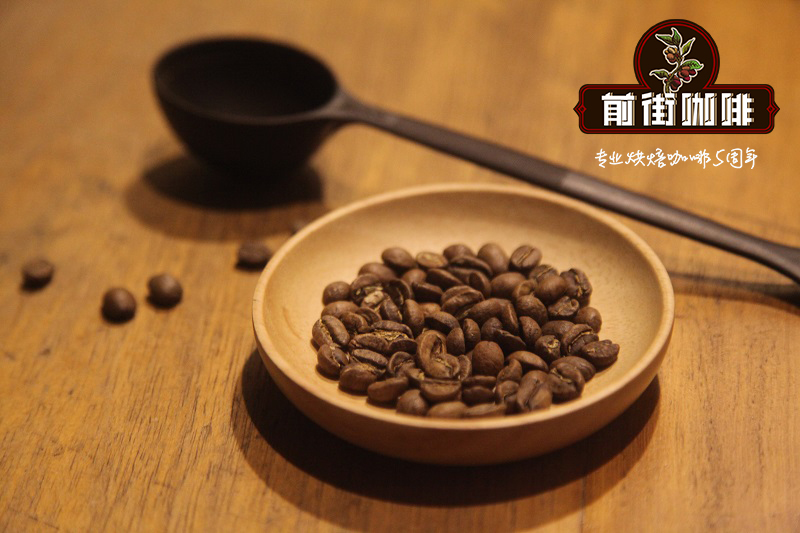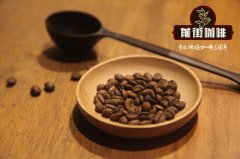Where are the main producing areas of Brazilian coffee distributed? Brazilian coffee growing environmental conditions determine flavor quality

Professional coffee knowledge exchange more coffee bean information please follow the coffee workshop (Wechat official account cafe_style)
Qianjie-introduction to Brazilian coffee
Brazil is in the tropics, the north is a tropical rain forest climate, hot and humid all the year round, suitable for the growth of tropical crops, coffee is a sunny crop, sufficient sunlight for its growth conditions. Once Brazil was a Portuguese colony for a long time, in order to meet the needs of Western Europe, Brazilian coffee has been growing single crops for a long time and developing tropical plantation economy, so Brazilian coffee has been its pillar industry for a long time.
Unlike most of the world's coffee grown in the mountains, most of Brazil's coffee is grown in the plains. Although the plains of Brazil are low above sea level (also 600-900m). But the area is wide, and it is located in the temperate zone, and the temperature is suitable, so it is also suitable for coffee growth. So Brazil has adopted a strategy of winning by quantity.
For this reason, Brazilian coffee does not have the hardness and strong sour taste of high-altitude coffee, and the beans themselves are soft, so most Brazilian commercial beans are easy to bake and taste softer.
The vast majority of Brazilian coffee is sour, sweet and bitter, with a gentle and versatile temperament. Accompanied by the rich Indonesian Mantenin, there will be a mellow chocolate taste; when matched with fruity and floral African beans, it will highlight special aromas such as fruits and nuts.
As the "backbone of coffee", Brazilian coffee is often devoted to medium-deep roasting to extract thick oils. The last thing in front of you will be espresso, American, lattes extracted from the espresso machine, or all kinds of sweet drinks that accompany milk, syrup and cream. Because of industrial production and mechanical picking, coffee production in Brazil is large, the cost is easier to control, and the spread is more widespread.
Brazil has many large farms and endless coffee plantations.
They use machine harvesting and machine drying, which is so efficient that they treat coffee as a general agricultural material, but give up the special flavor completely. As a result, many select coffee shops simply do not sell Brazilian beans to avoid self-deprecation.
There are still high-quality coffee beans in various parts of Brazil, which will be sold on the market under their own name and are no longer commonly known as "Brazilian coffee".
Some farms still retain the old bourbon species, with small particles of raw beans, obvious bending, red silk on the central line and the nickname "red center".
Knowledge: because Brazil is relatively mild, ordinary, suitable for ordinary baking, suitable for brewing in the most popular way, it is the best raw material for making Italian espresso and all kinds of fancy coffee.
In short: Qianjie is a coffee research hall, happy to share the knowledge about coffee with you, we share unreservedly just to make more friends fall in love with coffee, and there will be three low-discount coffee activities every month. The reason is that Qianjie wants to make more friends drink the best coffee at the lowest price, which has been Qianjie's tenet for 6 years!
END
Important Notice :
前街咖啡 FrontStreet Coffee has moved to new addredd:
FrontStreet Coffee Address: 315,Donghua East Road,GuangZhou
Tel:020 38364473
- Prev

Colombia coffee is only Arabica. Colombia coffee is a little sour. That's right.
Professional coffee knowledge exchange More coffee bean information Please pay attention to coffee workshop (Weixin Official Accounts cafe_style) Front Street-Colombia coffee introduction Colombia suitable climate for coffee provides a true sense of Eden. Coffee trees in Colombia are mainly cultivated in the Andes mountains at an altitude of 1300 meters on steep slopes between 1 - 11 - 15 N and 72 - 78 W.
- Next

What is the grading system of Brazilian coffee beans? the characteristics of Brazilian coffee are fresh and balanced.
Professional coffee knowledge exchange more coffee bean information please follow the coffee workshop (Wechat official account cafe_style) front street-Brazilian coffee classification introduction coffee grade is generally based on the defect rate, large bean eyes
Related
- Beginners will see the "Coffee pull flower" guide!
- What is the difference between ice blog purified milk and ordinary milk coffee?
- Why is the Philippines the largest producer of crops in Liberia?
- For coffee extraction, should the fine powder be retained?
- How does extracted espresso fill pressed powder? How much strength does it take to press the powder?
- How to make jasmine cold extract coffee? Is the jasmine + latte good?
- Will this little toy really make the coffee taste better? How does Lily Drip affect coffee extraction?
- Will the action of slapping the filter cup also affect coffee extraction?
- What's the difference between powder-to-water ratio and powder-to-liquid ratio?
- What is the Ethiopian local species? What does it have to do with Heirloom native species?

